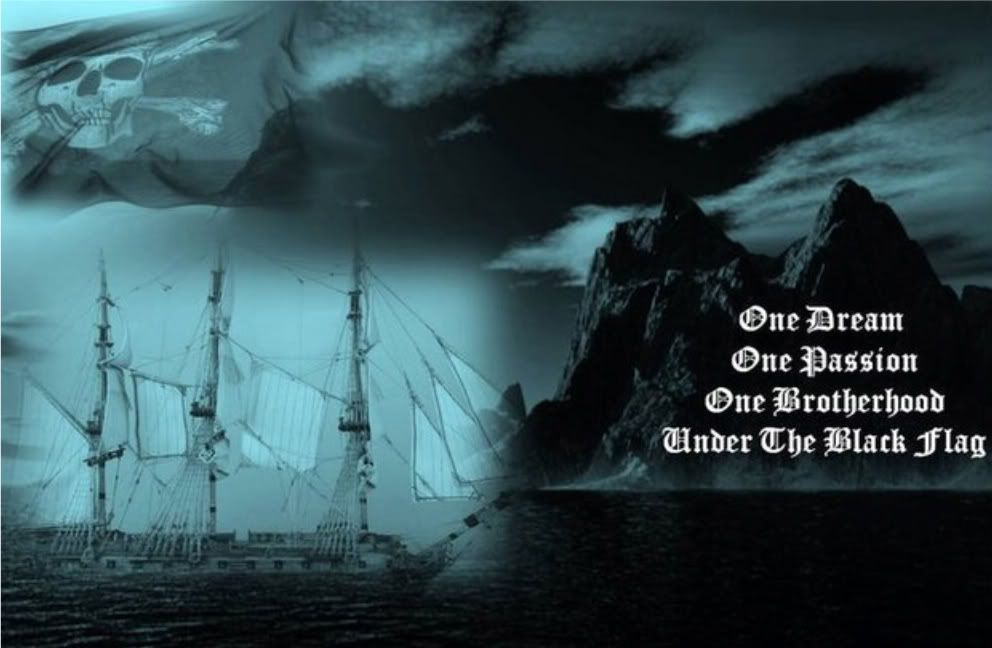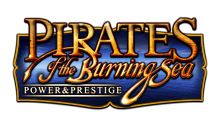Spanish Shipwrecks in 1554: “The Wreck of the 300”
articles, Spanish Shipwrecks in 1554: “The Wreck of the 300” 2:34 π.μ.
On April 9, 1554, a Spanish convoy set sail from the Veracruz, Mexico, port of San Juan de Ulua, on their homebound voyage to Spain, where anxious merchants awaited the treasury on board. The fleet included four ships—the San Andrés, San Esteban, Espíritu Santo, and Santa María de Yciar—and carried more than 400 people. Among them were prisoners, old conquistadors, merchants, and wealthy citizens returning home to Spain. En route the convoy was to stop off in La Havana, Cuba.
Of the four ships, only the San Andrés was to reach Havana. The remainder met a disastrous fate off the Texas coast. The story of the shipwrecks and the harrowing trials of the survivors provides one of the earliest and most interesting accounts in Texas history.
The convoy was halfway to Havana on April 29, 1554, when a storm hit. San Esteban, Espíritu Santo, and Santa María de Yciar were swept off course and ran aground on the sandbars off Padre Island, about 50 miles south of Corpus Christi Bay. More than 300 people died during the tragic event, which has become known as “The Wreck of the Three Hundred.”
The three ships wrecked within 2½ miles of each other, and it is believed that their crews and passengers banded together for comfort and safety. Master of San Esteban, Francisco del Huerto, salvaged a boat and sailed for Veracruz with a few seamen. Other survivors from the ship started walking southward, believing a Spanish outpost was within only a few days walk. Their assumption proved wrong. Of this group, only a few were to make it to Tampico, which was actually 300 miles away.
Local Karankawa Indians picked off the survivors during their torturous journey. At first, the natives offered some of the injured survivors fish to eat. Once at the campsite, they attacked them. Other Spaniards stripped off their garments along the trail, thinking the Indians wanted their clothing. Without even that meager protection, the group faced even greater hardships—mosquitoes and hot sands. Many traveled with wounds from Indian arrows, including Fray Marcos de Mena, who was shot seven times. His companions, thinking death was imminent, buried him in the sand, leaving only his head exposed. Revived by the warmth of the sand, he crawled from his "grave" and made his way along the coast. Friendly natives helped him make his way to Panuco.
Captain Huerto reached Veracruz safely, and there he told his story to Spanish officials. On June 6, a rescue mission, led by Angel de Villafañe, set out by sea to search for survivors. Meanwhile, a salvage expedition was organized and outfitted in Veracruz. On July 15, 1554, six salvage vessels under Captain García de Escalante Alvarado left Veracruz for the site of the wrecks. The ships had carried a valuable cargo from Spain to Mexico—resins, sugar, wood, cowhides and cochineal (insects from which a red dye could be produced) valued at $9.8 million in Spanish currency, gold bars and silver bullion and bound for the coffers of Charles V, and reales from trade in the New World. In the face of this lost wealth, the ships demanded salvage efforts.
Spanish salvage operations began on July 21, 1554 at San Esteban; Villafañe located Espiritu Santo. According to Spanish accounts, Villafañe's divers found a trunk belong to Pedro Milanes, a man they knew. Milanes' possessions included black satin tunic with blue velvet sash, a cape of sailcloth, a pair of shoes, three small silver disks, and 100 pesos in coin. Alvarado found Santa María de Yciar on August 20. A storm sank her salvage vessel, but uncovered seven boxes of the treasure she carried.
When the recovered treasure arrived in Veracruz it totaled 35,805 pounds. At least 51,000 pounds in precious metals, jewelry and coins was not accounted for by the Spanish auditors. The divers may have overlooked it�or they may have found some of it. As for the rest of the treasure, for four centuries it remained buried undersea, disturbed only by passing hurricanes, or sometime a drifting fishing line.
Modern salvage efforts began in the 1960’s when Platoro, Inc., a private enterprise from Indiana began removing artifacts from Espíritu Santo. This destructive salvage effort by private enterprise alarmed Texas officials because they felt that the recovered artifacts were rightfully the property of the citizens of Texas. They were also concerned that significant historical and archeological data were being destroyed in this unscientific process. Their position was strengthened considerably with the adoption in 1969 of the Texas Antiquities Code, a major protection act directly related to the Platoro controversy. Under this Code, the Texas Antiquities Committee conducted scientific excavation and recovery of San Esteban. The shipwreck has considerable significance; it is among the oldest scientifically recovered shipwreck sites in the Western Hemisphere.
The Texas Archeological Research Laboratory at the University of Texas at Austin was given temporary custody of a large portion of the recovered materials in order that they might be properly conserved and catalogued. Thousands of artifacts were processed and classified during the project. Layers of encrustation had to be painstakingly removed from metal artifacts, many of which had formed into large conglomerates. X-rays were taken to discern what lay inside these masses. Analysis and identification of many of the artifacts was successfully completed. In 1984, the Corpus Christi Museum of Science and History was named repository of the San Esteban collection. Two years later, the Museum was named repository for the Platoro, Keenan, and Purvis Collections.
Among the collections are weaponry, coins, supplies, personal items, and navigational devices. One of the astrolabes is dated 1545 and is the oldest dated mariner's astrolabe in the world.
Of the four ships, only the San Andrés was to reach Havana. The remainder met a disastrous fate off the Texas coast. The story of the shipwrecks and the harrowing trials of the survivors provides one of the earliest and most interesting accounts in Texas history.
The convoy was halfway to Havana on April 29, 1554, when a storm hit. San Esteban, Espíritu Santo, and Santa María de Yciar were swept off course and ran aground on the sandbars off Padre Island, about 50 miles south of Corpus Christi Bay. More than 300 people died during the tragic event, which has become known as “The Wreck of the Three Hundred.”
The three ships wrecked within 2½ miles of each other, and it is believed that their crews and passengers banded together for comfort and safety. Master of San Esteban, Francisco del Huerto, salvaged a boat and sailed for Veracruz with a few seamen. Other survivors from the ship started walking southward, believing a Spanish outpost was within only a few days walk. Their assumption proved wrong. Of this group, only a few were to make it to Tampico, which was actually 300 miles away.
Local Karankawa Indians picked off the survivors during their torturous journey. At first, the natives offered some of the injured survivors fish to eat. Once at the campsite, they attacked them. Other Spaniards stripped off their garments along the trail, thinking the Indians wanted their clothing. Without even that meager protection, the group faced even greater hardships—mosquitoes and hot sands. Many traveled with wounds from Indian arrows, including Fray Marcos de Mena, who was shot seven times. His companions, thinking death was imminent, buried him in the sand, leaving only his head exposed. Revived by the warmth of the sand, he crawled from his "grave" and made his way along the coast. Friendly natives helped him make his way to Panuco.
Captain Huerto reached Veracruz safely, and there he told his story to Spanish officials. On June 6, a rescue mission, led by Angel de Villafañe, set out by sea to search for survivors. Meanwhile, a salvage expedition was organized and outfitted in Veracruz. On July 15, 1554, six salvage vessels under Captain García de Escalante Alvarado left Veracruz for the site of the wrecks. The ships had carried a valuable cargo from Spain to Mexico—resins, sugar, wood, cowhides and cochineal (insects from which a red dye could be produced) valued at $9.8 million in Spanish currency, gold bars and silver bullion and bound for the coffers of Charles V, and reales from trade in the New World. In the face of this lost wealth, the ships demanded salvage efforts.
Spanish salvage operations began on July 21, 1554 at San Esteban; Villafañe located Espiritu Santo. According to Spanish accounts, Villafañe's divers found a trunk belong to Pedro Milanes, a man they knew. Milanes' possessions included black satin tunic with blue velvet sash, a cape of sailcloth, a pair of shoes, three small silver disks, and 100 pesos in coin. Alvarado found Santa María de Yciar on August 20. A storm sank her salvage vessel, but uncovered seven boxes of the treasure she carried.
When the recovered treasure arrived in Veracruz it totaled 35,805 pounds. At least 51,000 pounds in precious metals, jewelry and coins was not accounted for by the Spanish auditors. The divers may have overlooked it�or they may have found some of it. As for the rest of the treasure, for four centuries it remained buried undersea, disturbed only by passing hurricanes, or sometime a drifting fishing line.
Modern salvage efforts began in the 1960’s when Platoro, Inc., a private enterprise from Indiana began removing artifacts from Espíritu Santo. This destructive salvage effort by private enterprise alarmed Texas officials because they felt that the recovered artifacts were rightfully the property of the citizens of Texas. They were also concerned that significant historical and archeological data were being destroyed in this unscientific process. Their position was strengthened considerably with the adoption in 1969 of the Texas Antiquities Code, a major protection act directly related to the Platoro controversy. Under this Code, the Texas Antiquities Committee conducted scientific excavation and recovery of San Esteban. The shipwreck has considerable significance; it is among the oldest scientifically recovered shipwreck sites in the Western Hemisphere.
The Texas Archeological Research Laboratory at the University of Texas at Austin was given temporary custody of a large portion of the recovered materials in order that they might be properly conserved and catalogued. Thousands of artifacts were processed and classified during the project. Layers of encrustation had to be painstakingly removed from metal artifacts, many of which had formed into large conglomerates. X-rays were taken to discern what lay inside these masses. Analysis and identification of many of the artifacts was successfully completed. In 1984, the Corpus Christi Museum of Science and History was named repository of the San Esteban collection. Two years later, the Museum was named repository for the Platoro, Keenan, and Purvis Collections.
Among the collections are weaponry, coins, supplies, personal items, and navigational devices. One of the astrolabes is dated 1545 and is the oldest dated mariner's astrolabe in the world.













